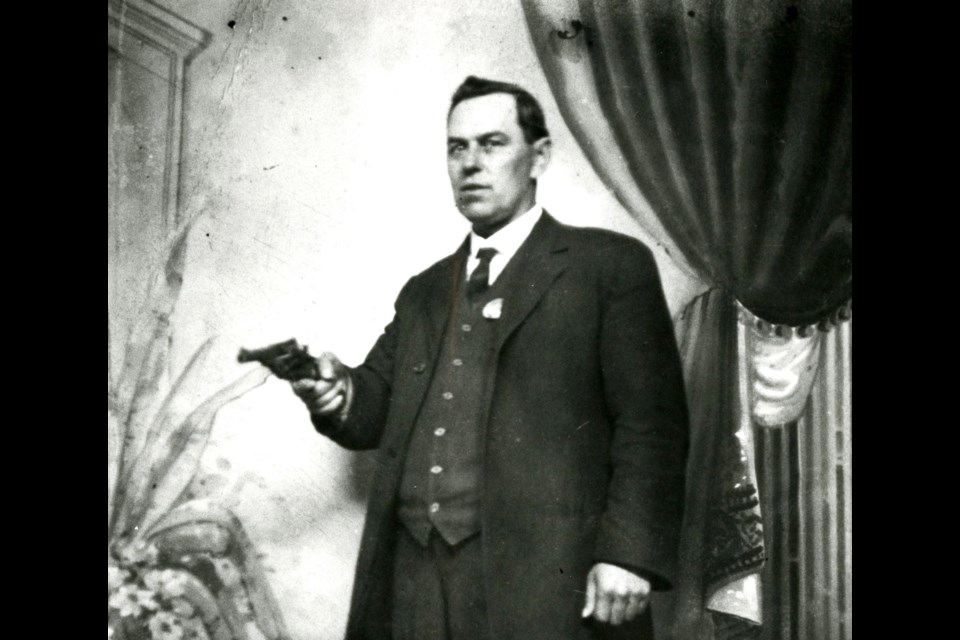Coquitlam archivist Jamie Sanford had always wanted to dip into the log books of Emil Paré but never had time.
The handwritten fonds of the municipality’s first police chief were donated to the City of Coquitlam in 2006, made up of thin three books that went into the Archives’ vault when it launched in 2014.
This past summer, Sanford flipped through the century-old pages and found a wealth of information about misdeeds that happened on Coquitlam soil from 1914 to 1919 — during and shortly after the First World War.
Sanford gathered some of the juicier details and shared them in an Archives web exhibit, which went live last week.
Titled Emeri Paré’s Police Logbooks, the online display gives “a kind of snapshot of what was happening on the home front during World War One,” Sanford told the Tri-City News on Nov. 18.
Background
Born in 1874 in upper New York state, Paré became a Canadian citizen in 1895 while living in Sherbrooke, Que.
Fifteen years later, he, his second wife and their seven children moved to the District of Coquitlam after Paré took a blacksmith job at the Fraser Mills sawmill — at the time, one of the largest in the British Commonwealth.
In 1911, in a bid to control the “tramps and undesirables […] being sent from Vancouver and Westminster to Coquitlam,” the Coquitlam Police Committee called for constables to ensure the “vagrants be severely dealt with and all possible means taken to protect citizens.”
Paré was named police chief in 1914 and tasked to also administer the volunteer fire brigade and the jail, which was in the back of his house on Brunette Avenue.
Stray dogs, sudden deaths
In his police log books, Paré notes complaints about stray dogs and thefts, as well as investigations for car accidents and sudden deaths.
Specifically, Paré recounts the drowning of a patient from Essondale Provincial Mental Hospital, now known as səmiq̓ʷəʔelə/Riverview Lands, in the Fraser River in 1914.
The following year, he also chronicles a rockslide that claimed the lives of three quarry workers near the Pitt River.
Paré also writes about thefts of hams, chickens and beef from farmhouses in the winter of 1915, one of the coldest seasons on record in the Lower Mainland, Sanford said.
And despite a municipal bylaw on dog possession, it appears Paré spent much of his time chasing down the loose animals.
Although the province took over policing services in Coquitlam in 1927, Paré stayed on the force for another year before transferring to the Mission detachment; he retired in 1933 and returned to Maillardville as well as to blacksmithing.
He died in 1952 at the age of 78.
Sanford hopes the web exhibit will be used by researchers, especially school-aged children for their local history studies.
Meanwhile, Coquitlam Archives’ next exhibit will be a history of newspapers in Coquitlam.
To donate photographs, letters, maps and other records to the Coquitlam Archives, you can call 604-924-3900 or email [email protected].
📣 Got an opinion on this story or any others in the Tri-Cities? Send us a letter or email your thoughts or story tips to [email protected].
📲 Want to stay updated on Coquitlam, Port Coquitlam, Port Moody, Anmore and Belcarra news? Sign up for our free daily newsletter.
💬 Words missing in an article? Your adblocker might be preventing hyperlinked text from appearing.





